For over a century, the Alexander Technique has been helping people reclaim their wellness by reconnecting us to our natural upright posture and poise.
The Alexander Technique is a mind-body method and a unique approach to self care. Its premise is that when we stop interfering with the body’s natural alignment, our musculoskeletal issues can resolve and we have more awareness of the choices in front of us. By learning to move efficiently through our weight bearing joints and applying ongoing mindfulness to our coordination, we can live a more vibrant existence, prescription free
Some of the benefits of applying the Alexander Technique’s principles to one’s daily life are:
- Sustainable chronic pain relief
- Reduced tension in the neck, jaw, shoulders and back
- Improved balance and coordination
- Injury rehabilitation and prevention
- Diminished stress reponse
- Fuller, more dynamic breathing
- Natural, elegant posture
- Heightened presence and poise
- Greater perception and self-awareness
Performing artists use the Technique to:
- Increase career longevity
- Manage performance anxiety
- Enchance vocal range and expression
- Play instruments with less repetitive strain
- Take on challenging roles with more subtlety and nuance
The Alexander Technique is an educational process, not a medical treatment. Many students of the Technique choose to study one-to-one with a certified teacher, since private lessons accelerate the learning curve and yield results more quickly.
Teachers of the Technique devote upwards of 1600 hours to understanding their craft and have intimate knowledge of body mechanics, breathing and coordination patterns and the delicate interplay of subconscious habits with the way we feel.
A typical Alexander Technique lesson lasts 45-minutes and consists of both upright and lying down work. A teacher will assess a student’s specific tension patterns, then employ a gentle touch plus verbal guidance to promote change. They might show anatomical or visual aids to clarify students’ understanding of the human form.
Initially, students perform simple activities such as sitting, standing, reaching for objects and walking. This allows both teacher and student to become well versed with the coordination patterns causing distress. A massage table is used to ease the demands of working against gravity. After an introductory period, lessons can also be devoted to more complex activities such as playing an instrument or practicing a sport. In both upright and lying down work, students are fully clothed but asked to wear minimally restrictive attire.
The Alexander Technique is not something done to you, but something you learn to apply. It’s movement education that allows you to take an active, daily role in your health and wellbeing.
The main principles of the Technique can be framed as questions you ask throughout the day:
AWARENESS
• What am I doing to myself as I a, b, c?
• How much force is really needed to e, f, g?
• Am I holding my breath?
• Am I compressing or contorting my spine?
INHIBITION
• What can I do less of?
• What can I say ‘no’ to?
• Is there a better way?
• Can I take more time?
DIRECTION
• What’s the vision of coordination I aspire to?
• Where should I apply my energy?
• Can I move with more ease and economy of effort?
No two people experience the principles in the same way and learning to apply them takes time and motivation. A teacher’s job is to distance you from your habits so you participate in something new. This new and unfamiliar way of moving is the basis for understanding and engaging with the Alexander Technique. Remembering to challenge your typical way of doing things is the beginning of gaining control over the way you feel.
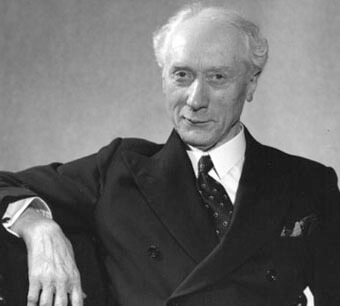
Frederick Matthias Alexander (1869 – 1955) was a young Shakespearean reciter at the turn of the last century. Passionate and hardworking, his career was off to a promising start when debilitating vocal problems compromised his ability to perform. Alexander sought help from medical professionals who advised rest and palliative measures, but nothing remedied the chronic hoarseness he developed on stage.
Reluctant to give up, Alexander asked his physician if something he was doing while performing might be causing the problem. The doctor agreed this seemed logical, but was unable to offer further guidance. And the genesis of a Technique was born.
After years of rigorous and methodical observation, Alexander regained full use of his voice and managed to cure himself of the chronic breathing problems he’d experienced since childhood. His insights demonstrated the inseparability between the way we treat ourselves and how we feel. Alexander’s ingenuity was two-fold: he identified optimal patterns of human movement as well as the subconscious foils to this natural functioning.
Having successfully overcome his challenges, Alexander resumed his career and began teaching his method to fellow performing artists. The more he taught, the more he saw the relevance of his Technique to a wide range of ailments. Doctors began referring patients and his credibility as an alignment and coordination specialist grew.
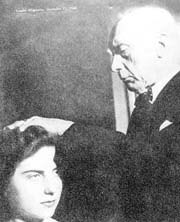
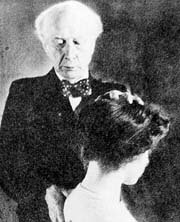
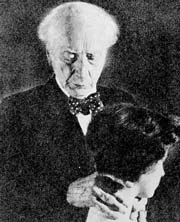
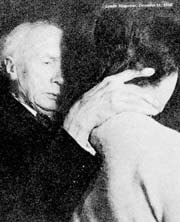
Expertise firmly established, Alexander left his native Australia for England to bring his method to a larger audience. He taught in London and the United States until his death at age 86. In 1973, Nobel Laureate Nikolaas Tinbergen dedicated a significant part of his acceptance speech in “Physiology or Medicine” to Alexander and his method.
There are currently 5 professional societies regulating Alexander Technique teacher training programs in 18 countries and serving students around the globe.
What started as one man’s personal odyssey has blossomed into a wellness practice beneficial to all.
If you live in New York City and are curious about private lessons, please contact me to discuss how the Alexander Technique can support your wellness goals.
To learn more about the Alexander Technique or find teachers in other areas, please visit:
The American Society for the Alexander Technique
The American Center for the Alexander Technique
The Complete Guide to the Alexander Technique
© 2017 SARA VASILIOU | HOPE AND ANCHOR WELLNESS, LLC | ALL RIGHTS RESERVED
